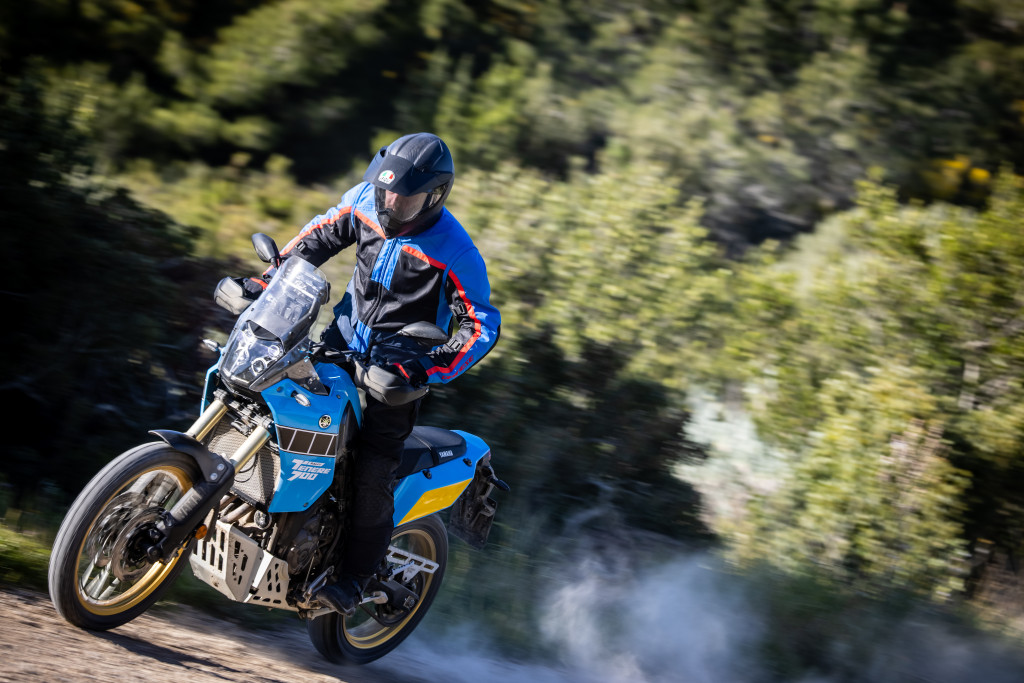Every motorcycle journey can be a new adventure, but you need to take a few small precautions to achieve freedom in your experiences.
There are few things in the world as invigorating as a good motorcycle journey. Whether it’s in a group, with a companion or solo, discovering hidden locations, breathtaking panoramas or just new food destinations on two wheels, it’s universally recognized as the best of stress relievers. Try it and see.
But those who’ve been traveling for years know how vital it is to prepare, especially when it comes to clothing and protection. So the first step will be careful selection of the perfect helmet for you and the right suit for the season. Then you’ll need to think about the equipment on the bike and accompanying accessories. It’s organization ahead of time, so you don’t find yourself unprepared along the way. It’s important to have equipment ready. That’s especially true for longer journeys, which might involve different climates and weather conditions or even some unpleasant surprises. So what should you take with you on a motorcycle trip?

To carry accessories with you but enjoy riding in complete safety and comfort at the same time, you need stowage. So it’s best to start attaching bags to your bike, starting with the tank bag. Why? Because it’s the most convenient to use and the one where basic things like wallets, toll devices, and smartphones are kept. Precisely because of the fragility of the items, check that it has a magnetic attachment system, in addition to the classic straps, as well as a pocket for easy access to items. It’s even better if it’s made of waterproof material. These are all features of the Dainese D-Tanker.
Saddle bags are a great classic of motorcycle travel. They’re an essential accessory for trips lasting several days because they can hold clothes, linens and provisions of various kinds. Dainese D-Saddle bags also have a 2-inch expansion zipper for those who need a lot of space, feature an integrated rain hood, and are designed to fit all types of motorcycles. If you really load up your bags, and maybe travel as a twosome, remember to adjust the preload on the monoshock.
It may seem inconsequential to some, but staying hydrated on the hottest journeys (like in summer or the tropics) is often overlooked. Fun and thrill-seeking can overshadow our bodies’ needs, even though they’re vitally important both for safety and for having fun. This is why a backpack with a water bag easily solves the problem. The Alligator Backpack features a 2-liter inner bag lined with insulating material to maintain the water temperature.
A good traveler knows how important it is to know the area. But you can’t know everything. That’s why we feel we should recommend a GPS satellite navigator if you plan on taking many trips to unknown locations. The most modern ones are small and light, have touchscreen displays that even work with gloves, and can connect to your smartphone. That’s not to mention the great battery life.
But if you don’t think that’s the best choice, you can always consider a smartphone holder. There are plenty, and they usually have a system for attaching them to the handlebar. Some can be attached directly to the steering plate or to the dedicated bars already fitted as standard on many recent motorcycles. Consider ones with waterproof cases, especially if you’re going to take long journeys by bike, making them unpredictable.
Whether you choose to buy a GPS navigator or a smartphone holder, remember that batteries don’t last forever. The problem can be solved with a simple 12V charger, which can be plugged into the classic cigarette lighter socket. If your motorcycle doesn’t have one, you should know that there are special kits on the market for direct connection to the motorcycle battery (some have a USB port), but if you’re not familiar with them, we recommend that you contact a mechanic or auto electrician.
Rain is never a rider’s friend, either in summer or winter, even on the most protective of motorcycles. That’s why we suggest that you always have a rain kit consisting of jacket and pants, or a rain suit, especially if you want maximum water protection. Of course, rain gear is made to be worn over technical garments – watch the sizes, and consider the bulk of clothing. With that in mind, have you already looked at our tips for enjoying your bike in summer, or in winter?
Remember that preparation isn’t only about accessories, but also and above all technical clothing. Choosing the right protective garments, depending on the season, lets us travel in peace of mind, so we can enjoy every mile. After selecting the perfect equipment for your needs, it’ll be time to look at this guide, just as a reminder, but one that could decide whether you avoid forgetting even the most trivial of things before setting off on a journey, be it a weekend getaway or trip around the world.